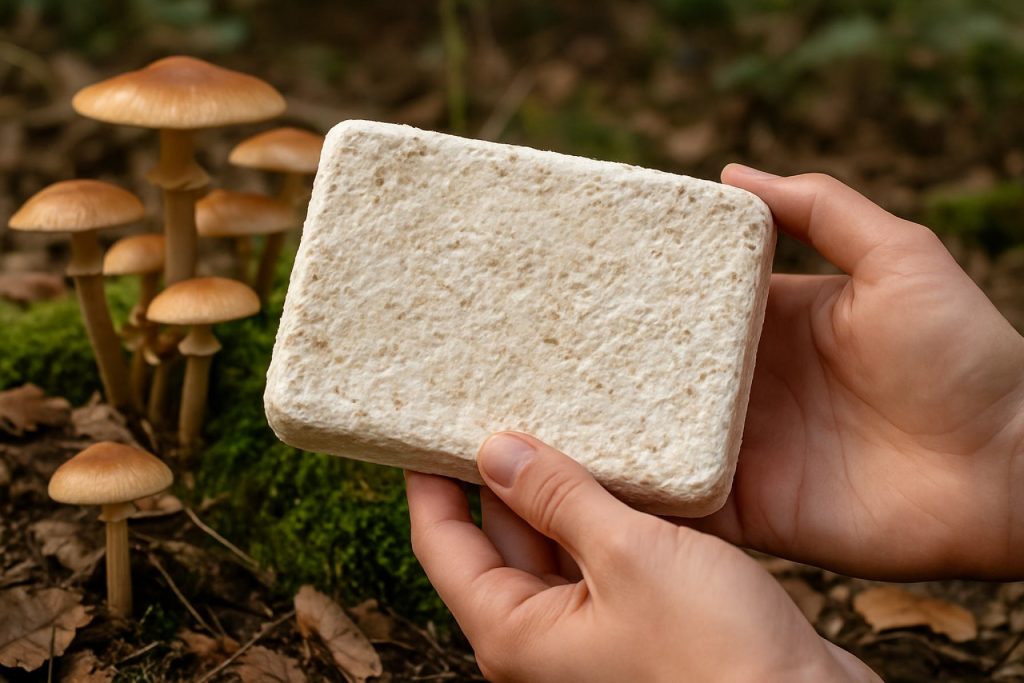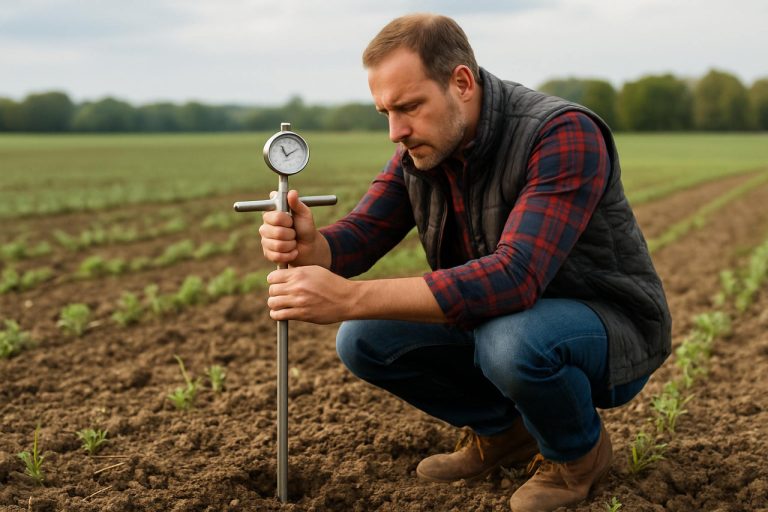
- Mycelium from split-gill mushrooms is emerging as a versatile, eco-friendly material for biodegradable plastics and packaging.
- These fungal materials use far fewer chemicals than traditional bioplastics, forming a strong, flexible, and entirely compostable matrix.
- Key molecular components, schizophyllan and hydrophobin, provide durability and stability even in demanding uses like transparent films and emulsions.
- Mycelium responds to environmental cues, enabling potential smart packaging that senses spoilage, humidity, or temperature changes.
- Applications include edible packaging, cosmetic ingredients, and even composting bags that actively break down waste.
- Interest from industries such as textiles and food technology highlights the growing potential for scalable, sustainable solutions using mushroom-based materials.
Not long ago, the idea that mushrooms could become the backbone of next-generation materials might have sounded like science fiction. Today, deep inside innovative European laboratories, scientists nurture a living web—the mycelium—of the split-gill mushroom into shape-shifting, eco-friendly wonders.
Fed with only a fraction of the chemicals required for conventional bioplastics, the cultivated mycelium forms a dense meshwork, infused with nature’s own nanotechnology. Here, filaments grow like miniature capillaries, weaving schizophyllan—a robust, fibrous polysaccharide—alongside hydrophobin, an extraordinary protein that thrives where oil and water collide. Together, these molecules create a complex extracellular matrix, the fungal equivalent of reinforced concrete, but light, flexible, and entirely biodegradable.
Breakthroughs in the lab have unleashed the potential of this living composite. Stretched into transparent films, it rivals the tensile strength of some plastics and can be tailored to enhance durability by simply adjusting how the fungus grows. In fluid emulsions—imagine the creamy union of water and oil in everything from salad dressings to face creams—the fungal proteins self-organize, lending unshakable stability. This could make possible safe, edible packaging and cosmetic ingredients, all produced by an edible fungus.
Yet, the possibilities extend far beyond replacing single-use plastics. Game-changing adaptability is written into the mushroom’s DNA. Mycelium’s unique responsiveness to humidity, temperature, and light hints at a future where packaging materials act as sensors, alerting users to spoilage or environmental change—poised to transform the very definition of “smart” materials.
Engineers imagine pairing these biodegradable matrices with cellulose-based electrodes for transient batteries that power sensor devices before harmlessly dissolving into soil. The active life cycle embedded in the fungus means these materials can do more than disappear when discarded; they can help decompose waste from the inside out, creating “living” composting bags and packaging whose environmental impact is double positive.
The surge in interest for mycelium-based technology has attracted the attention of everyone from textile designers to food scientists. As society grapples with plastic pollution and the urgent need for genuine sustainability, these mushroom materials stand at a thrilling intersection—where biology, materials science, and ingenuity meet.
The key takeaway: Nature’s original recyclers, fungi, are not just decomposers but master builders. Their living materials promise not only to reduce our dependence on fossil-based plastics, but also to give us design tools previously confined to fiction. The next wave in biodegradable technology might just bloom in the quiet, tangled threads beneath your feet.
“Mushroom Tech Revolution: How Mycelium Materials Are About to Disrupt Plastics, Packaging, and More”
Mycelium Materials: Surprising Facts, Trends, and Life-Changing Applications
Mushrooms and their underground network—the mycelium—are stepping into the spotlight as the next big thing in sustainable materials. If you’ve heard about “bioplastics” or eco-friendly packaging, you might be surprised to learn just how far scientists have come in harnessing the power of fungi. Here’s what you need to know, what’s next on the horizon, and how mushroom-based materials could transform everything from food packaging to electronics.
—
1. What Makes Mycelium So Special?
Mycelium refers to the intricate web of fungal threads that live beneath the surface of soil, wood, or decaying matter. Recent breakthroughs leverage the natural properties of mycelium, including:
– Self-Assembly: Mycelium grows into any shape given the right conditions, reducing the need for molds or high-energy processes (Science, 2021).
– Minimal Inputs: It thrives on agricultural waste, sawdust, or straw, using far fewer chemicals compared to conventional plastics.
– Biodegradability: Once discarded, mycelium-based products completely break down in 30-90 days under composting conditions (Nature Sustainability, 2020).
– Intrinsic Strength: Certain polysaccharides like schizophyllan, and sticky proteins like hydrophobin, make mycelium materials strong, flexible, and waterproof—ideal for packaging and building materials.
—
2. How-To Steps & Life Hacks: Making Mycelium Materials at Home
Thinking DIY? While industrial processes are more advanced, you can experiment at home:
1. Sterilize Substrate: Boil straw or sawdust. Let it cool.
2. Inoculate: Mix in mushroom spawn (available online).
3. Mold Growth: Pack the mix into a mold. Cover with foil.
4. Incubate: Leave in a dark, humid place for several days until fully colonized.
5. Dry: Remove from mold, dry thoroughly—now you have a basic mycelium object!
—
3. Real-World Use Cases
– Sustainable Packaging: IKEA and Dell use mycelium for shock-absorbing, compostable packaging (CNBC, 2022).
– Vegan Leather: Titles like Mylo™ are producing bags, shoes, and apparel (adidas, Stella McCartney).
– Acoustic & Thermal Insulation: Used in building panels with natural fire resistance (Dezeen, 2021).
– Edible Packaging: Food-safe, biodegradable films for snacks and perishables.
– Biodegradable Electronics: Paired with cellulose electrodes for transient batteries in environmental sensors (see EPFL).
—
4. Reviews & Comparisons: How Do They Stack Up Against Plastics?
Pros:
– 100% home-compostable (Biodegrades without microplastics)
– Minimal resource use (water, energy, chemicals)
– Naturally fire- and water-resistant with specific strains/proteins
– Grows in days (unlike petroleum-based processes)
Cons:
– Lower durability for some applications requiring long-term weatherproofing
– Sometimes higher initial cost versus mass-produced plastics (but dropping due to scale)
Comparison: Mycelium foams have outperformed polystyrene in drop tests while cutting CO2 emissions by up to 90% (Ecovative, 2023 report).
—
5. Controversies, Limitations, & Challenges
– Scalability: Mass production involves careful control of growth, moisture, and contamination—requiring specialized facilities.
– Longevity: For long-life applications (cars, electronics), mycelium’s biodegradability can be a drawback. Surface treatments can slow decay, but this reduces compostability.
– Economics: Large-scale adoption depends on subsidies, policy support, and continued lowering of costs with industrial scale-up.
—
6. Insights, Predictions, and Industry Trends
Market Forecast: The global mycelium-based materials market is projected to reach $3 billion by 2028, with annual growth over 15% (Allied Market Research, 2023).
Trends:
– Smart Materials: Mycelium can be engineered to respond to temperature, humidity, or spoilage, paving the way for smart packaging.
– Carbon-Negative Footprints: Carbon sequestered during fungal growth could make some products net negative in emissions.
– Circular Economy: Used mycelium packaging enriches compost, closing the waste loop.
—
7. Security, Sustainability, and Ethical Sourcing
– Mycelium products contain no allergens or carcinogenic additives, making them generally safe for food applications.
– Major producers are committed to non-GMO, nontoxic strains for consumer safety.
– Unlike plant crops, mushrooms can be grown year-round with little water and no pesticides (see UNEP).
—
8. How to Buy or Try Mycelium Materials
– Packaging: Ecovative, Mushroom® Packaging, and similar brands available online.
– Vegan Leather: Products under the Mylo™ or Bolt Threads line.
– DIY Kits: Fungi Perfecti, Grow.bio.
Pricing: Retail prices for mycelium leather goods are still somewhat high compared to vegan plastics, but costs are dropping fast as production increases.
—
9. Most Pressing Questions Answered
Q: Can mycelium packaging replace ALL plastics?
A: Not yet. While mycelium is highly suited for packaging, insulation, and textiles, it’s less fit for long-life, load-bearing, or ultra-thin film uses without modification.
Q: Is mycelium safe for food?
A: Yes, provided strains are non-toxic and grown on food-grade substrates (EFSA, 2019).
Q: How long before it hits the mainstream?
A: Within 5 years, expect to see mushroom packaging at major retailers and fashion lines offering mycelium leather as a standard, not a novelty item.
—
10. Actionable Tips & Recommendations
– Look for certified mycelium packaging next time you buy electronics or specialty foods.
– Compost used mycelium packaging in your home bin for zero-waste disposal.
– Support startups or established brands investing in mushroom-based materials for personal goods and home use.
– Experiment with mycelium DIY kits for a sustainable (and fun!) family project.
—
Final Thoughts
Mycelium-based technology is rapidly moving from the lab into daily life, offering realistic, scalable solutions for sustainability—not just idealistic dreams. With innovations in smart packaging, vegan textiles, and even electronics, the next wave in biodegradable materials might be as common as a walk in the woods, thanks to the astonishing capabilities of mushrooms.
For more on sustainability and biodegradable materials, check resources like UNEP and EPFL.
—
Keywords: mycelium materials, mushroom packaging, biodegradable plastics, sustainable materials, vegan leather, compostable packaging, mycelium technology, smart packaging, environmental impact, green innovation
—
Sources: Science (2021), Nature Sustainability (2020), CNBC (2022), Ecovative (2023), Allied Market Research (2023), Dezeen (2021), EFSA (2019), UNEP, EPFL



